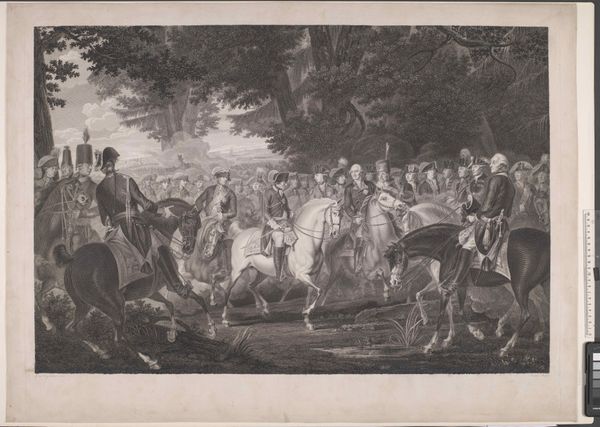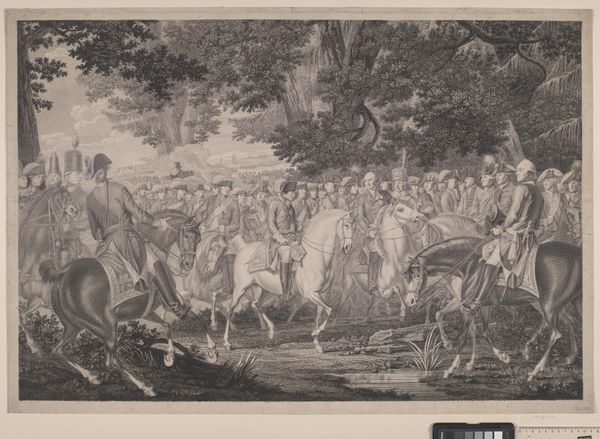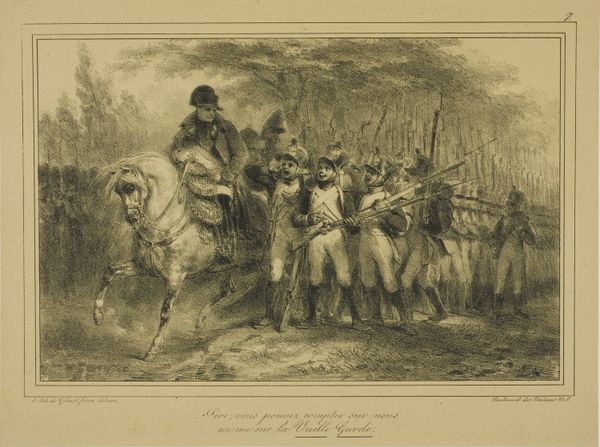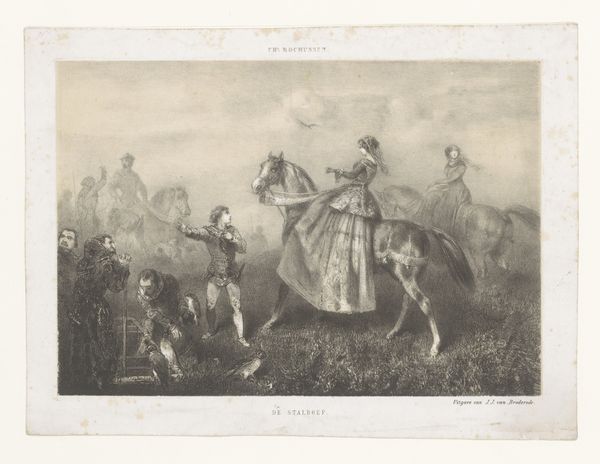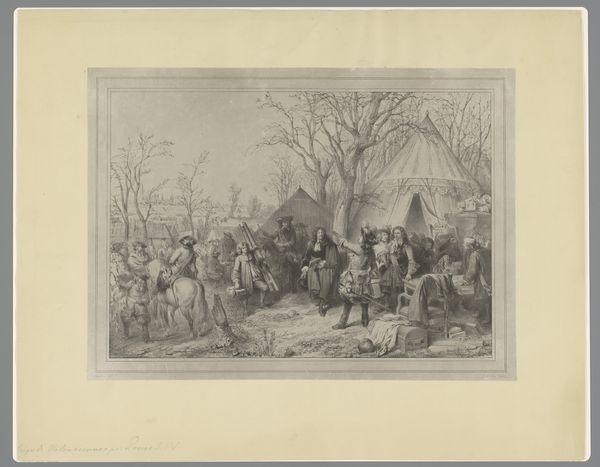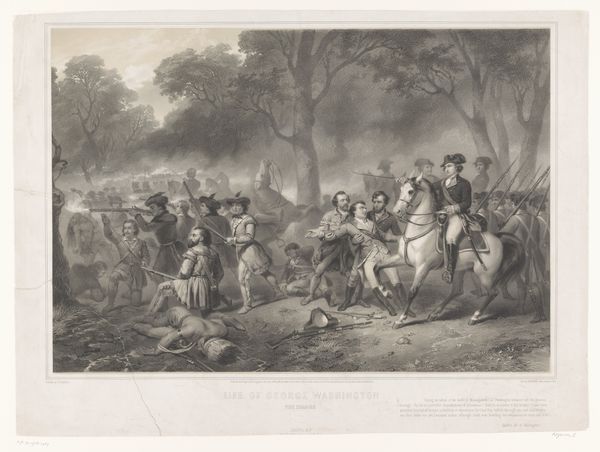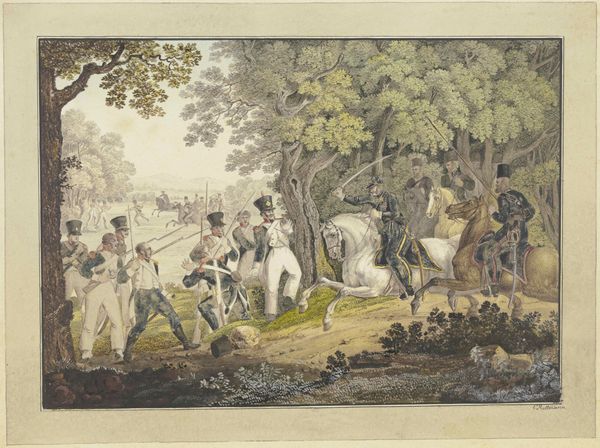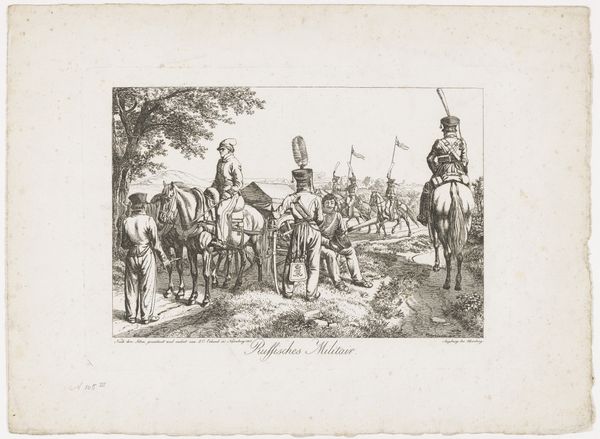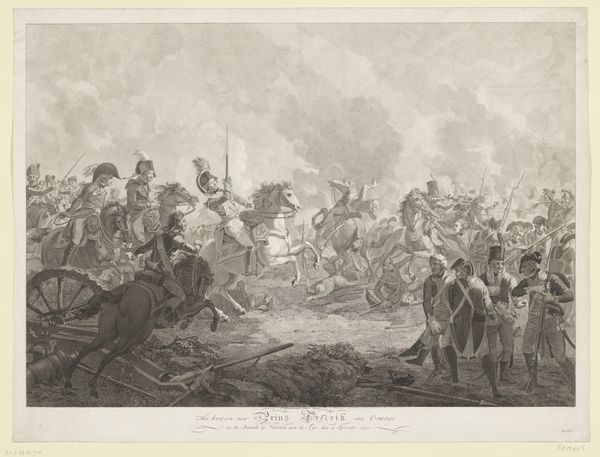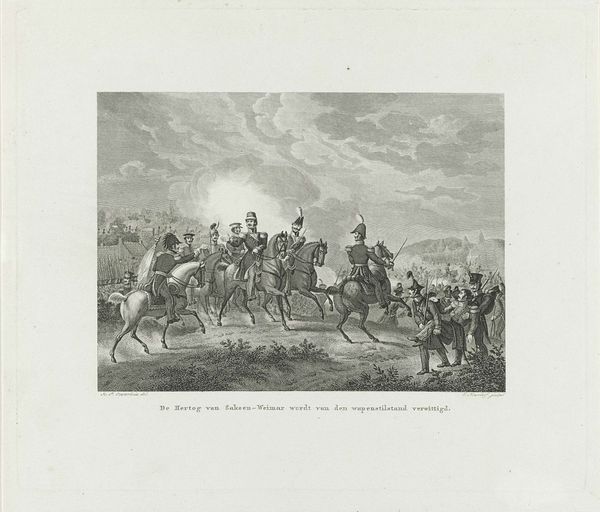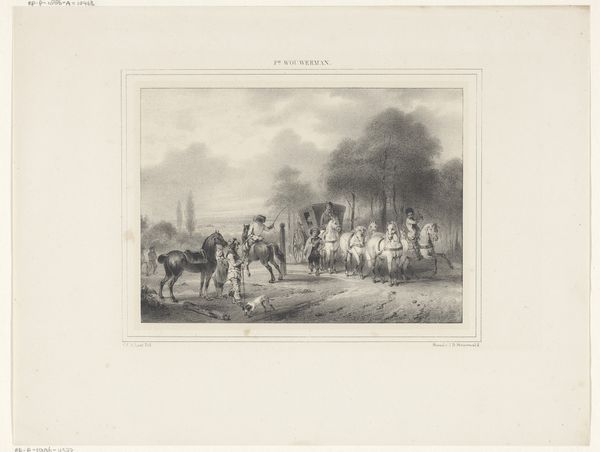
Frederik d. Store rider hjem efter en revy ved Potsdam 1788 - 1791
0:00
0:00
drawing, print, pencil, engraving
#
drawing
#
narrative-art
# print
#
landscape
#
pencil
#
history-painting
#
engraving
Dimensions: 670 mm (height) x 918 mm (width) (bladmaal)
Curator: Here we have J.F. Clemens’ print, “Frederik d. Store rider hjem efter en revy ved Potsdam,” made between 1788 and 1791. Editor: It has such a strong processional feel—the horses are beautifully rendered and seem almost photographic for the era, with a striking quality of light in their musculature. Curator: Absolutely. What we see is part of a larger tradition of history painting designed to cultivate a very particular public image of leadership. Notice the crowd forming at the horizon: these prints circulated widely and were a powerful way to construct Frederick’s persona, linking him intimately with both the military and the populace. Editor: The choice of engraving, in multiple tones and shades of grey, underscores its accessibility; as a print, it would have been comparatively cheap to produce and therefore available to a much wider audience than painting alone. It brings Frederick to the people in a tactile way. The sheer labor involved in the crosshatching and details must have been enormous. Curator: And it highlights the degree to which Clemens and others were invested in visually memorializing and, indeed, glorifying the Prussian monarch in the wake of his death. Think about the relationship between artist and subject. This is, after all, memorial and carefully constructed representation; in a very real sense, it extends Frederick’s reign. Editor: I am really drawn to how this narrative freezes an important point of time into a repeatable, distributable image made from layered ink on paper—which makes me consider printmaking as industrial production of that era. How do you think such works helped disseminate cultural values beyond Prussia? Curator: Exactly! Prints such as this fueled national identity, serving as accessible and reproducible forms of propaganda. These kinds of prints became deeply interwoven with Prussia’s ambition for dominance within the Germanic lands. It's a potent reminder of art's involvement in shaping political and social realities. Editor: Thinking about the materiality, one is invited to consider not only the subject represented, but the socioeconomic status it endows upon the owners, viewers and admirers. It becomes its own power symbol in circulation, just as much as the image itself. Curator: Yes, it speaks to the intricate dance between power, representation, and the art market that remains relevant to how art is collected and interpreted even today. Editor: Indeed. Thinking through both the image itself and the circumstances surrounding its creation gives a layered, almost material, experience of history.
Comments
No comments
Be the first to comment and join the conversation on the ultimate creative platform.
